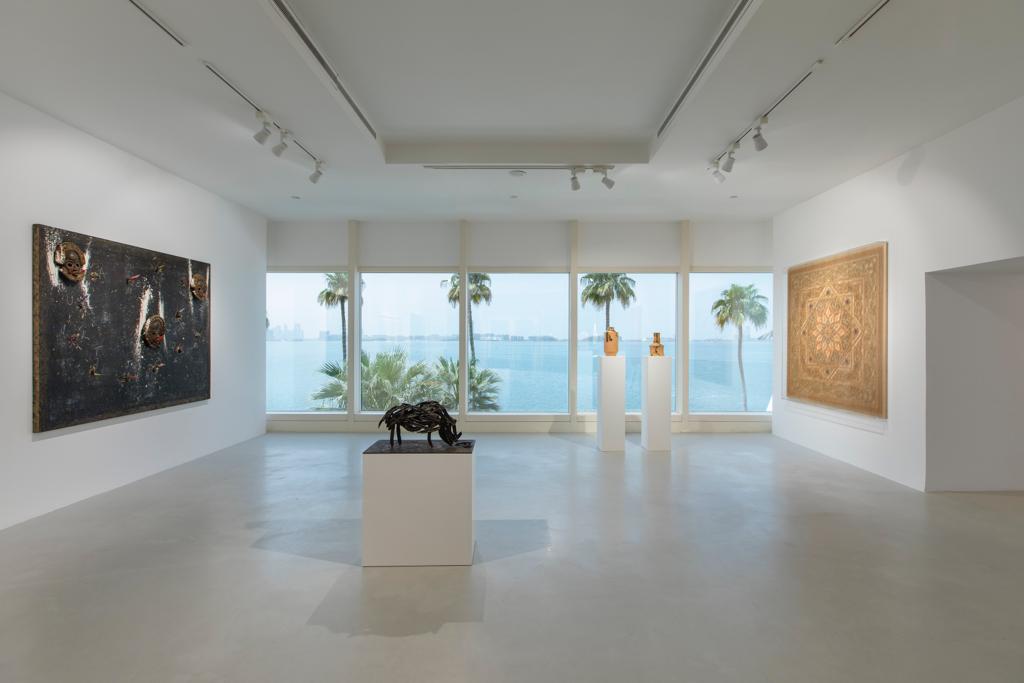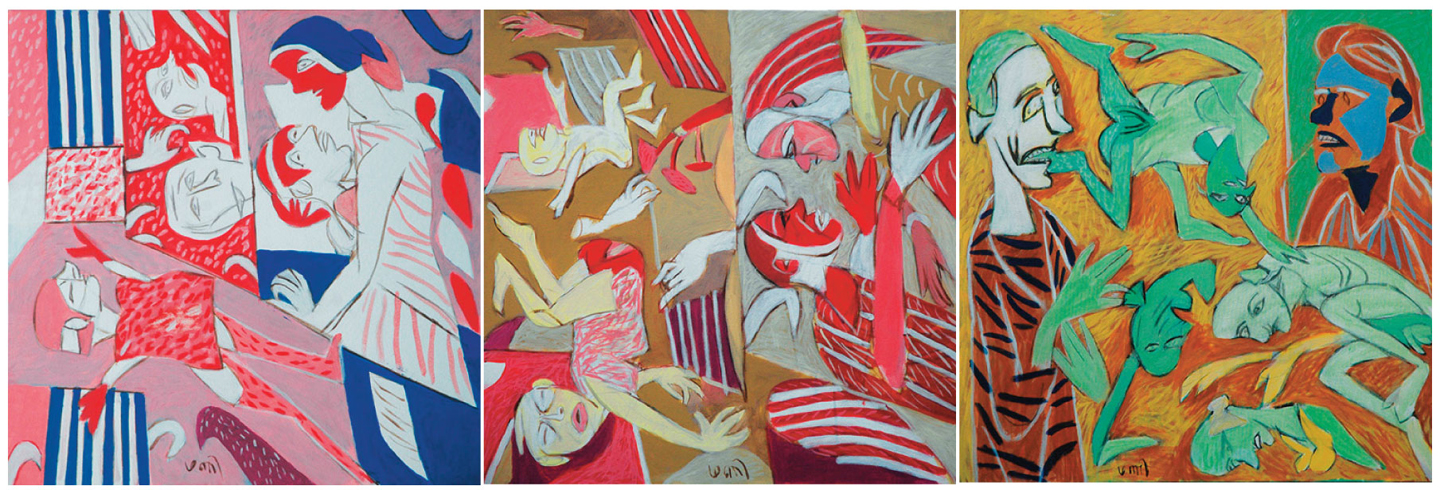(A critical review of the Self Isolation series presented at ART3f Monaco 2021)
Monaco, August 2021. Stepping into a contemporary art fair after (or in between?) successive lockdowns felt strange, almost unfamiliar. People, voices, the freedom to move without restrictions. The world was beginning to come alive again, yet the memory of months confined within four walls still lingered in the body. Among hundreds of works at ART3f, the Self Isolation series, represented by PassepARTout Gallery, caught my attention immediately. Four canvases of 30×30 cm, four empty interiors, not a single human figure. After months spent locked away, when you stare at the same furniture for hours on end, when objects begin to seem almost alive from excessive attention. The paint itself becomes tactile: velvet reads differently from wood through the pressure and rhythm of the brush, and wallpaper patterns emerge through layered colour rather than drawn line. Texture works as a method here, insisting that these surfaces exist, that paint has weight and resistance even when depicting emptiness.

The first association: Doris Salcedo (Istanbul Biennial 2003) – 12,000 wooden chairs wedged between two buildings, compressed by architecture into impassability. This project still appears on the covers of publications about the biennial, though more than twenty years have passed. Salcedo chose the chair as the quintessence of the domestic. The simplest and most recognisable object of everyday life, which fills the void between buildings whilst simultaneously becoming a witness to violence, speaking of the disappeared, of those who will never sit again.

Oil on canvas Oil on canvas
30 x 30 cm
Assaya employs the same motif (the chair as witness to absence) but operates on a different scale. Where Salcedo worked with public space, thousands of chairs and collective memory of violence, here we find the private, the intimate, the experience of home transforming from refuge into a cage. Home ceased to be a place of rest: It became the office, bedroom, gym, the only accessible space. Chairs on which we sat for months became witnesses to the changing relationship with our own walls.

Oil on canvas Oil on canvas
30 x 30 cm
Assaya is an interdisciplinary artist based in Italy. In her practice, she explores the interaction between internal experience and the materiality of the environment, combining painting, philosophical concepts and elements of spatial analysis. Her practice is distinguished by philosophical depth and attention to the symbolic layers of everyday experience. Assaya’s artworks investigate phenomena of presence and absence, collective memory and the psychology of space.
In the series, at first glance, we see simply saturated painting of interiors. But the artist herself draws from a specific philosophical foundation, though this is not immediately obvious. Baudrillard and his “The System of Objects”, where interior objects become signs, replacing living connections. Merleau-Ponty and the phenomenology of the body: we think through poses and gestures that are inscribed in the contours of furniture, even when bodies are absent. Freud and the concept of unheimlich, the familiar become strange. There is something Freudian in how the domestic becomes uncanny: isolation transformed home into a space you know too well, to the point of nausea, to the moment when room corners and furniture contours begin to seem odd.

Oil on canvas Oil on canvas
30 x 30 cm
Another classical philosophical question: is there sound from a falling tree if no one hears it? Here lies a similar problem – does a chair exist if no one sits on it and no one will? Thank Goodness we have Heidegger (sometimes I think he had an answer for any question actually) to distinguish between thing and object: an object is that which stands against humans, which they place before themselves for use. A thing is something deeper. It exists in itself, before and beyond human function. A cup remains a cup even when one does not drink from it. Its essence lies in the capacity to contain, not in the act of filling. Isolation made this question concrete: furniture continued to stand in rooms no one visited, waiting for bodies that did not come. Assaya captures this suspended status, objects caught between function and memory of function. Perhaps bright colours are precisely the means by which an object asserts itself without humans: when functional purpose is lost, only visual presence remains, a cry of colour that proves existence. And popular culture, of course, had already imagined four rooms in the 1995 film Four Rooms: 4 stories in one night, each room with its chaos, its guests, its drama. But here the guests have already left, the stories ended or never began. These chairs simply wait, holding memories of bodies that may or may not return operating in so-called liminal state.
Self Isolation turns domestic space into psychological terrain. The series captures a specific historical moment whilst articulating something less tied to dates: how confinement alters perception, how objects persist when humans withdraw, how emptiness can be both refuge and trap. Four small canvases that hold more than their dimensions suggest, asking what remains when presence dissolves into memory.

Oil on canvas Oil on canvas
30 x 30 cm
Now it seems almost unreal: was there actually a lockdown? That altered state, the strange relationship with home, when familiar walls became both prison and sanctuary. But all the paintings went to a French collector so perhaps it was real after all (I hope).
–
Text by Anastasiia Garnova
Art critic, curator and research associate at the State Hermitage Museum, St Petersburg, Russia, contributor at Arte&Lusso magazine, ZIMA magazine, MASTERS magazine, and the Hermitage magazine.


